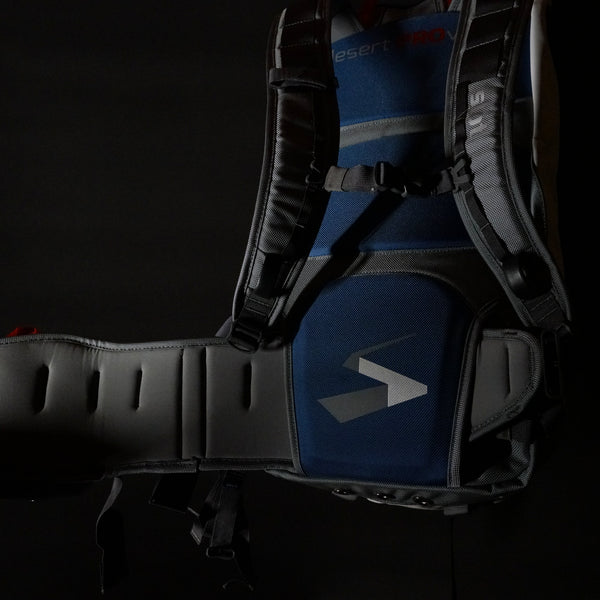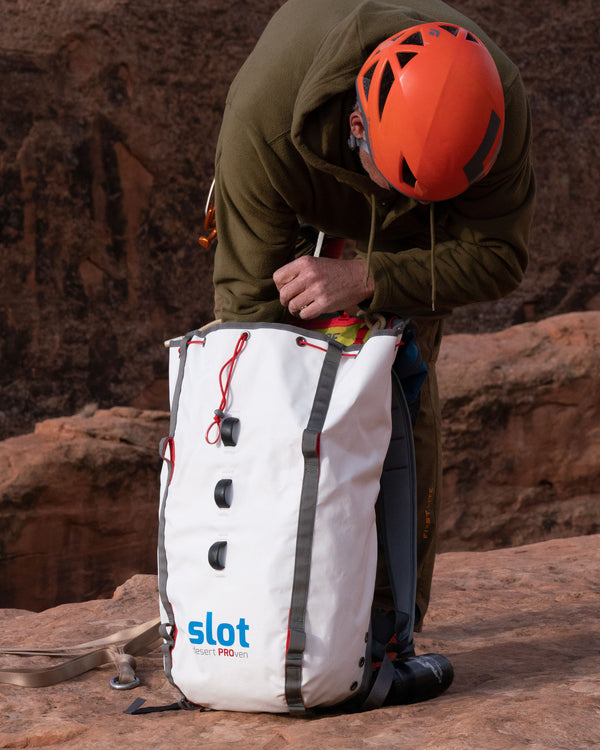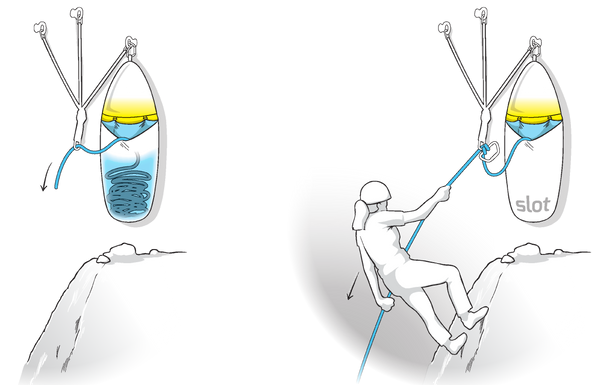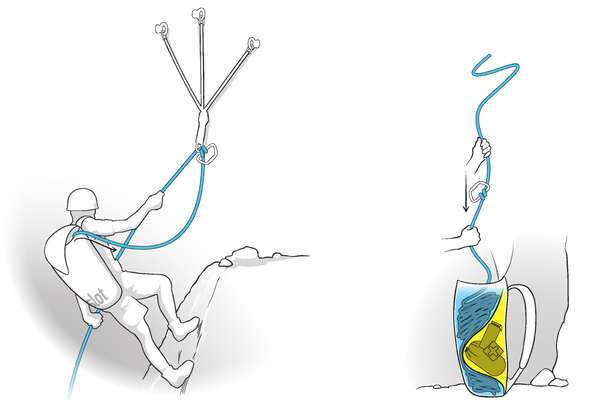
The padded waist belt is designed to carry comfortably on any approach, and is easily removable and stored away in the gear side to haul or drag through the tight spots.

The Guide 50L was designed and tested by guides. It carries two 60m lines or similar combinations. In addition to personal gear, it has room for group rescue, first aid, safety and food. More pockets in lid help organize navigation items and smaller items.

The SRS divider system allows you to separate your rope from gear with a physical divider inside the pack. We recommend first flaking your rope into the rope side, attaching the bottom of your rope to the black rope loop and the top to the red loop. Then put all your gear except harness and helmet into the gear side to isolate it from the flaked rope. Helmet and harness fit nicely on top once all packed since they are the first items to be used.

For any rappel from 15ft to over 200ft, if your anchor station allows, you can start by attaching the pack to the anchor by either the lid loop or grab loop for an easy work station. Then flake out ONLY the amount of rope needed from inside of the pack, toss the rope, and put in your preferred rope block technique. The rest of your rope stays neatly packed inside the bag. Everyone in the group descends but the last person, who will be descending with the pack containing the rope.

The last person in the group descends with the pack on their back while the flaked rope pays out smoothly and predictably from the rope side of the bag. Once safely on the ground, the rope is pulled and flaked back into the rope side of the bag and tied off on the red rope loop. This eliminates the need to uncoil and recoil rope between rappels, improving speed, efficiency, and safety.